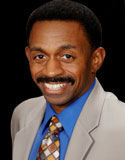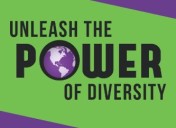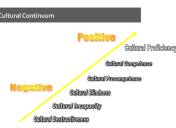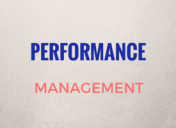Mining for Gold in Your Team
 On Aug. 14, 2012, Pearson Partners hosted the bimonthly DFW HR Roundtable, a networking and knowledge-sharing group of senior human resources executives in the North Texas area. Attorney Jonathan Michael Bowman, chief executive officer of Clear Picture Leadership, discussed how today’s leaders can find the “gold” in their teams. Here is a summary of his remarks.
On Aug. 14, 2012, Pearson Partners hosted the bimonthly DFW HR Roundtable, a networking and knowledge-sharing group of senior human resources executives in the North Texas area. Attorney Jonathan Michael Bowman, chief executive officer of Clear Picture Leadership, discussed how today’s leaders can find the “gold” in their teams. Here is a summary of his remarks.
Before we start mining for gold, let’s take a brief look at three contrasting types of leaders. First is the “Do What I Say” leader, who wants team members to do very specific things without discussion or presenting new ideas. Next is the “Open Door Policy” leader, who is always accessible, but is not necessarily seeking any input or ideas from team members. In contrast, the “Clear Picture” leader understands every person in the organization is full of golden ideas, golden creativity, and golden ingenuity. In order to achieve dynamic change, leaders need to understand how to tap those invaluable internal resources.
Q. Why do you call it mining for gold?
A. If we were to go back in time to the California Gold Rush, I don’t think any of those ’49ers would say “I am here because I am ‘open’ to finding gold.” Instead, they aggressively and affirmatively wanted to find gold. That is one of the fundamental principles of the clear picture leader. He or she understands that you have to go out and tap into that vein of creativity and insight needed to achieve dynamic change.
Q. What is the starting point for driving that change?
A. Every successful dynamic change effort begins with a vision. A leader without a vision is like a piano player without a piano—it just doesn’t work. So, having a vision is the first element in driving picture perfect change.
Q. Why is a vision so important?
A. A vision puts everybody on the same path, rather than going off in different directions. A vision provides the team with a common goal, and tells everyone, “We need to work this way.”
Q. Where do visions come from?
A. A vision comes from the ground up, after talking with managers, supervisors, employees and clients. You just can’t dictate a vision from the top down. And leaders must understand that those “golden” insights to build a vision can come from anyone on the team, such as the receptionist, the accountant or the HR professional. Remember that leaders are surrounded by brilliance. Why leave that on the table when you set the vision for the organization?
Q. Could you expand on that ground-up approach?
A. In developing a vision, you have to mine for gold by talking to everybody. James White, the CEO of Jamba Juice, says the more you get people involved, the better the change effort1. My favorite strategy is to set up creative teams from all departments and all levels of the organization. Let them interact with each other and discuss ideas, and see what happens. That’s how Facebook came up with the “Like” button.
Q. What type of vision do we need to set?
A. Think about “Rocky,” “Secretariat,” “The King’s Speech,” or any other inspirational Hollywood movie. At the core is a seemingly impossible goal or vision. So, if you want to inspire people, your vision has to be just as huge. Sometimes, we don’t achieve our goals because they are too small, and we don’t pull out the creativity and the ingenuity necessary for dynamic change. It’s also important for our visions to serve the greater good. Therefore, every vision should have a cause—not just dollars and cents. That gives us an opportunity to pull the very best out of our people. People want to work harder when they understand the cause and are passionate about it.
Q. What else do leaders need to do?
A. Once they have presented a vision, effective leaders don’t let up. That means you have to become the “Chief Reminding Officer,” going back and reminding the team about the vision and the cause. That helps them stay focused, push harder and deliver amazing results. Leaders also need to be confident and believe in achieving the vision. As leaders, we are exhibits in a museum. Everybody is watching, even when you don’t realize it, and taking their cues from you. So, it’s your job to project that confidence. Think about this: Do you ever say something or do something that detracts from the confidence of your team members? And if so, what’s the relationship between those statements and your quest for gold? Our confidence is important not only for us, but even more so for our team members, to build this momentum and to jump start their confidence. Professor John Kotter at Harvard University says in order to achieve dynamic change, we just need a small group of people, a core coalition, to begin to push it forward and ignite the momentum2.
Q. What do team members need?
A. If you want to be a leader who brings about dynamic change, you have to give your people the things they need in order to thrive. That means treating them right and paying attention to their feelings as well as their minds. They have to know who we are, and we have to be able to listen to them.
Q. Any other thoughts?
A. When we set a huge dynamic vision and a big goal, we begin to challenge the creativity and the ingenuity of our people. That process allows us to achieve things we thought were impossible. Mining for gold has a great impact on our organization, and also on the lives of the people that we serve through our leadership. We can help lead our organization to dynamic, picture-perfect change.
Good visioning questions to ask team members:
|
Notes:
1 http://ir.jambajuice.com/phoenix.zhtml?c=192409&p=irol-newsArticle&ID=1696650&highlight
Please save the date for our next event on Tuesday, October 16, 2012. Our guest speaker will be Cathy McGuinness, best-selling author of the novel Emperors’ Clothes.
Related Posts
- ← Tips from the Leadership Coach: Get Your Employees to Step Out of Their Comfort Zone
- Post-Election Clarity: Opportunities and Risks in 2013 →













